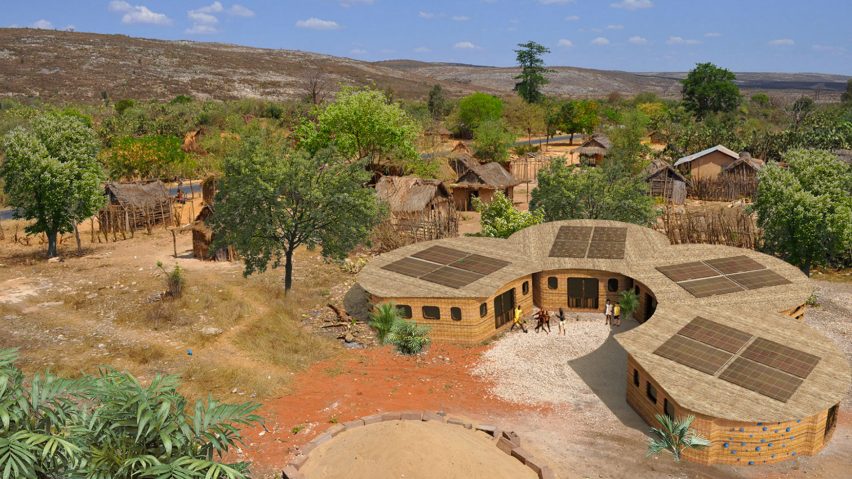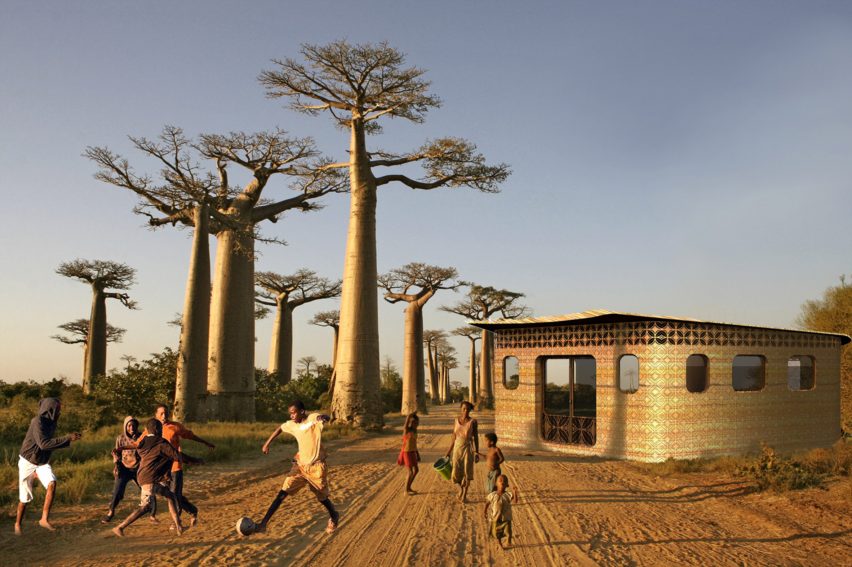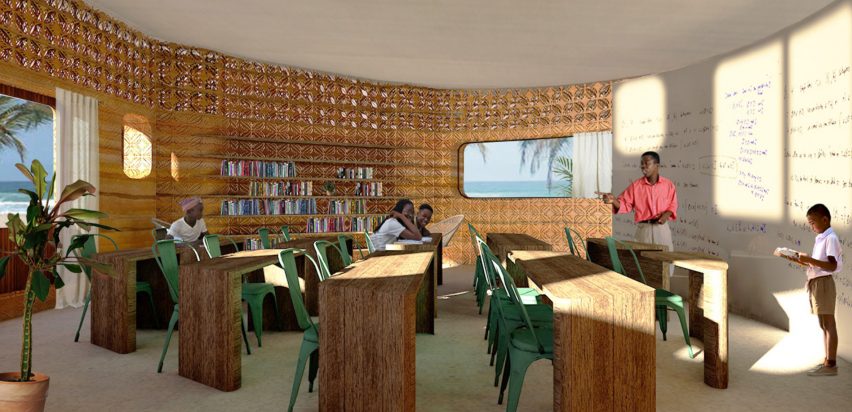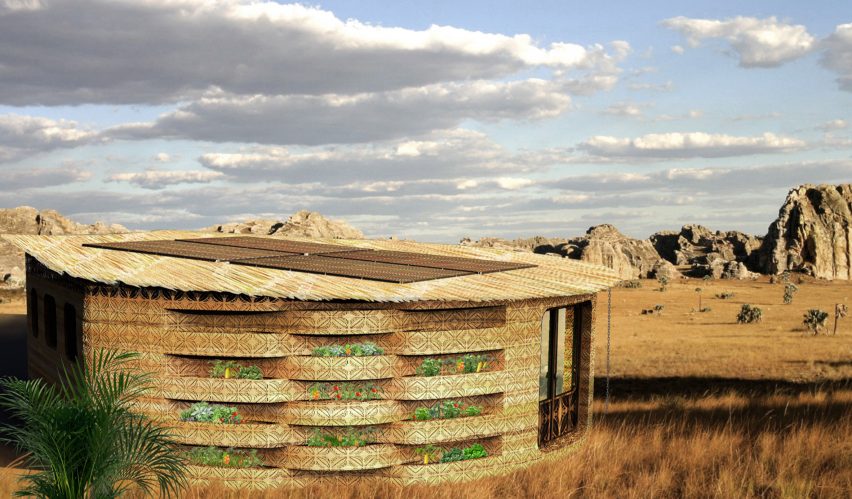
Studio Mortazavi to build "world's first 3D-printed school" in Madagascar
Studio Mortazavi has designed a 3D-printed school made from concrete and locally-sourced construction materials in Fianarantsoa, Madagascar.
Designed for non-profit organisation Thinking Huts, the solar-powered school will be made from pods that can serve different functions – as classrooms, science labs and dance studios, for example – and be expanded as needed.
Each pod will be constructed from a 3D-printed concrete aggregate, which Studio Mortazavi said can be made from recycled materials to reduce CO2 emissions.
A roof made from galvanised metal covered with native grass will help the buildings blend into their surroundings.

When is it is complete Thinking Huts believes the structures will be the first 3D-printed school in the world.
"From our knowledge, we will be building the first 3D-printed school in Madagascar," Thinking Huts founder Maggie Grout told Dezeen. "There is a possibility that a 3D-printed school exists in the world, though we have not uncovered where it may be."
"3D printing technology has been used in various building projects; the most similar would be NewStory who are building 3D-printed houses in Latin America," she added.
Thinking Huts eventually aims to expand beyond the pilot project and build schools in partnership with communities throughout Madagascar.

For the initial pilot, a single-storey building will be printed for the university campus of Ecole de Management et d'Innovation Technologique (EMIT) in Fianarantsoa, which will measure 230 square metres and house up to 20 students.
This design can then be expanded by adding new pods to the first Thinking Huts school.
"The beauty of the pods is that we can build an infinite campus with them as needed by the students and school," Studio Mortazavi founder Amir Mortazavi told Dezeen.
"Since the 3D printer is limited in terms of the diameter it can print, the pod technique is the most efficient way to be flexible and to be able to grow as needed."

The design of the pods, which have one concave, one convex and two straight sides, was chosen because it suited the surroundings and was scaleable.
"We designed the school after doing a great deal of research on the printing constraints and capabilities, the vernacular architecture of Madagascar and geometric shapes that are the most conducive for creating modular pods," Mortazavi said.
"We began with trying various different pod configurations using circles, hexagons, pentagons and octagons, and decided on a hybrid between a purely faceted shape and an organic shape."
The exterior of the school will consist of two narrow walls with a hollow or honeycombed centre, which reduces the amount of cement used and can be insulated if needed.
Studio Mortazavi designed a relief pattern for the exterior walls, which will be printed by the 3D-printer and repeated on the interior walls.
"We found a Malagasy print that was used on textiles and repeated that pattern on the skin of the building," Mortazavi said.
"We also thought about integrating colour into the aggregate that is used in the printing to have the building adapt to the natural colours that exist within the landscape of Madagascar," he added.
"Something akin to a 3D-printed rammed-earth technique."
The facade will also feature a climbing wall and pockets that the children can use for a vertical farm.
Solar panels on the roof will power the school, which will have water catchment systems, energy-efficient lighting and compostable toilets."For the initial project in Madagascar we won't need heating as the average temperature rarely dips below room temperature," Mortazavi said.
"However, we will add fans to cool the buildings and we also have ventilation surrounding the top of all of the pods. When we do print these schools in climates that demand heating, I envision radiant heating to be used as the most efficient and comfortable heating source."
Materials for the school will be sourced from local companies, and Thinking Huts and Studio Mortazavi hope to eventually also develop commercially available products to support the local craftsmen and industry.
"We are working with a construction and material supply company called Holcim in Madagascar," Mortazavi said. "We will make a reconnaissance trip to Madagascar to work with sustainable wood and local craftsman to design and build the furniture."
The school will be built in collaboration with Finnish 3D technology company Hyperion Robotics, and Thinking Huts is currently fundraising to help fund the first school. It plans to start building the school in July or August 2021.
Other recent community-driven 3D-printed projects include one by Yves Béhar that focuses on building houses for farming community in Latin America and a series of rentable concrete houses in Eindhoven.
Renderings are courtesy of Studio Mortazavi.